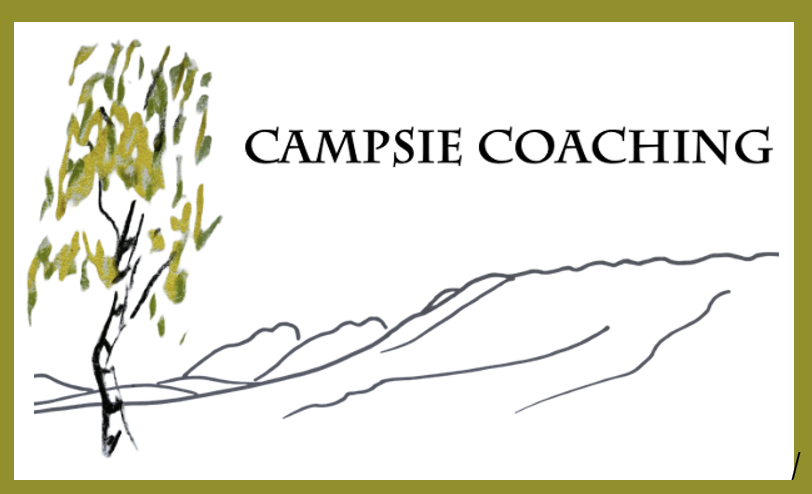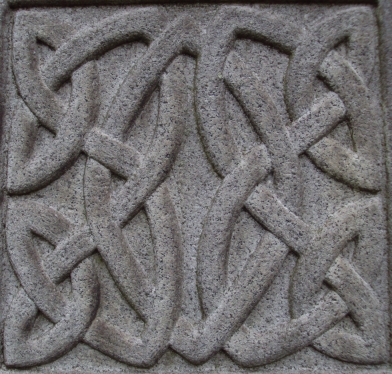If brain fog and sensitivity make reading from a screen difficult, click here to listen to me read this blog on YouTube.
I made a new friend this week. We have never met, and never will. She died in 1876, but her words jump out of the page of my new book and speak to me as a kindred spirit. She is that rare gift, a person who has trodden the same path to recovery and lives every moment in the wonder of it all.
For the first time in my life I am free to live as I please; and I please to live here. My life is now (in this season) one of wild roving, after my years of helpless sickness. I ride like a Borderer, – walk like a pedlar, – climb like a Mountaineer, – sometimes on excursions with kind & merry neighbours, – sometimes all alone for the day on the mountain.
(Harriet Martineau to Ralph Waldo Emerson, 2nd July 1845, cited in Kerri Andrews’ Wanderers. A History of Women Walking)
As I read these words, I am swinging in my hammock on a gloriously warm May day. Behind me loom the steep escarpment and craggy cliffs of the Campsie Fells, magnet and refuge for the people of Glasgow for centuries.
Two years ago, the walk of a few flat metres, from my old house to this hammock in the garden, was a triumph for me; any exertion prompted trembling knees, a pounding heart and the fear of ‘overdoing it’. Now I am basking in the knowledge that last week I climbed 450 metres to the summit above my new home as easily as any other semi-fit 55 year old. Ecstatic with the achievement, I lay in the soft grass, with the sun warming my face, listening to the skylarks soaring above it all.
Harriet Martineau has been described as the first female sociologist, and ‘the greatest American abolitionist’, despite being born in Norfolk and dying in the Lake District. She wrote from a religious, feminist and holistic perspective, and her words earned her an invitation to Queen Victoria’s coronation. More importantly, she achieved the rare status of being a mid-nineteenth century woman whose work enabled her to support herself.
Much of my own background and interests resonate with this account, but it is Harriet’s descriptions of the deep thrill of being able to walk in the hills after years of dependence and immobility that touches me most. I have tested my recovery to the full now, with two house moves, retraining as a recovery specialist, and setting up a new business, all in a little over a year. I am now utterly confident that the years of fatigue and pain, the cycles of illness and relapse, are behind me. It is hard to put into words the exultation of feeling your heart pound and knees tremble, knowing that this is the body’s normal response to the steep slope you are climbing. I feel as if I could walk and climb forever! I know the surge of joy that would have accompanied the dip of her pen as Harriet wrote, ‘no-one but a restored invalid can conceive what it was to ramble for miles’, or as she wrote of her ‘thirst’ for green spaces that could only be quenched by walking.
My book’s author, Kerri Andrews, writes with puzzlement of Harriet’s walking as being both a cause of, and cure for an unidentified illness, which began at the height of her literary career, and rendered her bed/sofa-bound for half a decade. Harriet’s family attributed her illness to excessive walking, frequently cautioning her of the dangers of ‘overdoing it’, and she was indeed a compulsive walker. This is my first clue that she may well have been an early member of my tribe, people whose drive to numb deep emotional distress has underpinned compulsive exercise, work, caring, fixing, drinking, shopping, eating, drinking, or drugs. Ultimately this need to numb culminates in a collapse into chronic illness and dependency, when our minds and bodies can no longer drive through the pain.
I put down the book and reach for my laptop at this point in the book, willing to bet my new-found recovery that Harriet’s was not a happy childhood. And yes, there it is – one of the greatest female writers of her time, and a woman whose compassion and drive really did help to change the world, grew up in a family that disapproved of who she was, of what, for others, made her great. She is one of us I am certain.
Her mother urged all her children to be well read, but at the same time opposed female pedantics "with a sharp eye for feminine propriety and good manners. Her daughters could never be seen in public with a pen in their hand" (Wikipedia)
I have seen this story time and again. First as I accompanied others on a journey through The Chrysalis Effect’s recovery programme, and now as a recovery specialist, supporting others on the road that Harriet and I have travelled. I have seen how often chronic exhaustion and pain often follow the dislocated bond of our traumatic births and/or early childhood experiences that instil a deep feeling of shame at never being enough, being a square peg in a round hole, always needing to try harder to overcome that deep-rooted shame of failing to be what our mothers needed us to be. I too grew up torn between a desire to learn, to write, to work, to explore the world, and the constant refrain that there is no greater aspiration than being a stay-at-home mother. As a recoverer, and now as a therapist, the cause of Harriet’s illness, and the role of walking in its genesis, seems painfully clear and my heart aches for her and then exalts at her joyful recovery.
I read that Harriet was, at first, resigned to her situation, living in her sister’s house and being treated for pain with opiates, to which she became addicted. Then comes the next big Aha! passage, Harriet attributed her rapid improvement, after a decade of dependence, to her discovery of mesmerism. This was a highly contentious, but popular, approach to treatment in Victorian Britain, which involved the induction of a trance state in patients. There are echoes here of the way in which I learned to intercept my own spiralling anxiety and pain through meditation, which also induces a trance state, giving relief from an otherwise permanent Fight or Flight state. There are echoes now too in the intense scepticism that still surrounds this powerful therapeutic tool.
Harriet was so convinced of the role of mesmerism that, like many of my colleagues, she trained in its application after experiencing its effects. For Harriet, this experience marked the beginnings of her positive walk back to full health. Like those who followed in her footsteps, this choice was met with hostility from family members, who preferred to see walking as an unfeminine activity that had caused her collapse, and who encouraged her to stay in bed and rest.
One of the hardest parts in the early stages of recovery is to keep your feet on the path and set aside well-meaning, and sometimes not so well-meaning, exhortations to rest and accept that there is no cure and no hope of recovery. It can be no co-incidence that Harriet’s transformation, from a recovering invalid, to the mountaineering borderer, followed her move to a new home of her own in the Lake District. I could hug her! It seems that we have both found the insight and courage to step away from our old limiting beliefs, and from the expectations of others, to reach for what our hearts, minds and bodies are crying out for. Harriet found her home and health in the mountains of the Lake District, and I found mine in the west of Scotland.
Stepping out today through my back garden gate into the beauties of birch and oak woodland, I imagine that Harriet has joined me. We compare notes and share the joy of movement that only those who have lost and then regained it can really grasp. I’m sure that her incisive mind would have revelled in the answers to those mystery symptoms that I am now trained to explain to her.
More than 250 years have passed since Harriet moved to the Lake District, and we are still describing mystery illnesses with no known cure, that predominantly affect women. Fibromyalgia/chronic fatigue syndrome/ME/long Covid/post-viral-syndrome: these are modern diagnoses that have replaced older descriptions such as hysteria, hypochondria and chlorosis. There are tantalising hints of this common thread of experience in Florence Nightingale’s early conflict with her family over her reluctance to marry and ambitions to nurse, and then later in her unexplained decision to retire to bed for her final 40 years. It is there in Charlotte Gilman’s The Yellow Wallpaper, describing the heroine’s experiences at the hands of an abusive, coercive husband and an unwarranted diagnosis of post-partum depression. It is there in the many fictional heroines of Jane Austen and others, who were prescribed a rest in the country, or at the seaside. It is there in the invention of bathing machines to carry these early wild swimmers into the cold water with dignity and a minimum of effort.
When we look beyond symptoms to commonalities in our stories, our histories, the patterns are blindingly clear. These are not illnesses like measles or Covid, they are ’diagnoses of exclusion’, labels applied to similar collections of symptoms when medicine can’t find a clear pathological cause. More importantly, these symptoms are not signs of a treacherous or failing body, but signals that our minds and bodies are being overwhelmed. We are living lives dictated by other people’s priorities and expectations and crushing our own spirits down in order to survive. Our fatigue, our pain, our IBS (Harriet also wrote of stomach troubles), our numb and clumsy fingers, our migraines, our palpitations and dizziness, our strange skin conditions and sensitivities to noises, smells, chemicals, foods, are all normal responses to abnormal circumstances.
When we find the support and courage to determine our own path, to live where we choose, work as we choose, love who we choose, speak as we choose, the symptoms begin to melt away. When we stop being afraid that exercise will drive us straight back into bed, and walk out with confidence, our strength returns, day by day, step by step. Each step takes us towards a day when we can say with Harriet, ‘I need not after this say that I am well.’ Our wellness will sing out in our faces and the spring in our steps.
Who are your companions on your recovery journey? Who are the people who light up your life and make you believe that anything is possible?
If you are feeling alone, isolated, and in the dark, click here to read about the common signs and symptoms that those of us with these diagnoses share, here to read about my own journey to recovery, and here to book your free 30 minute Discovery Call to talk about how I can help you to get your feet on the path to recovery.



